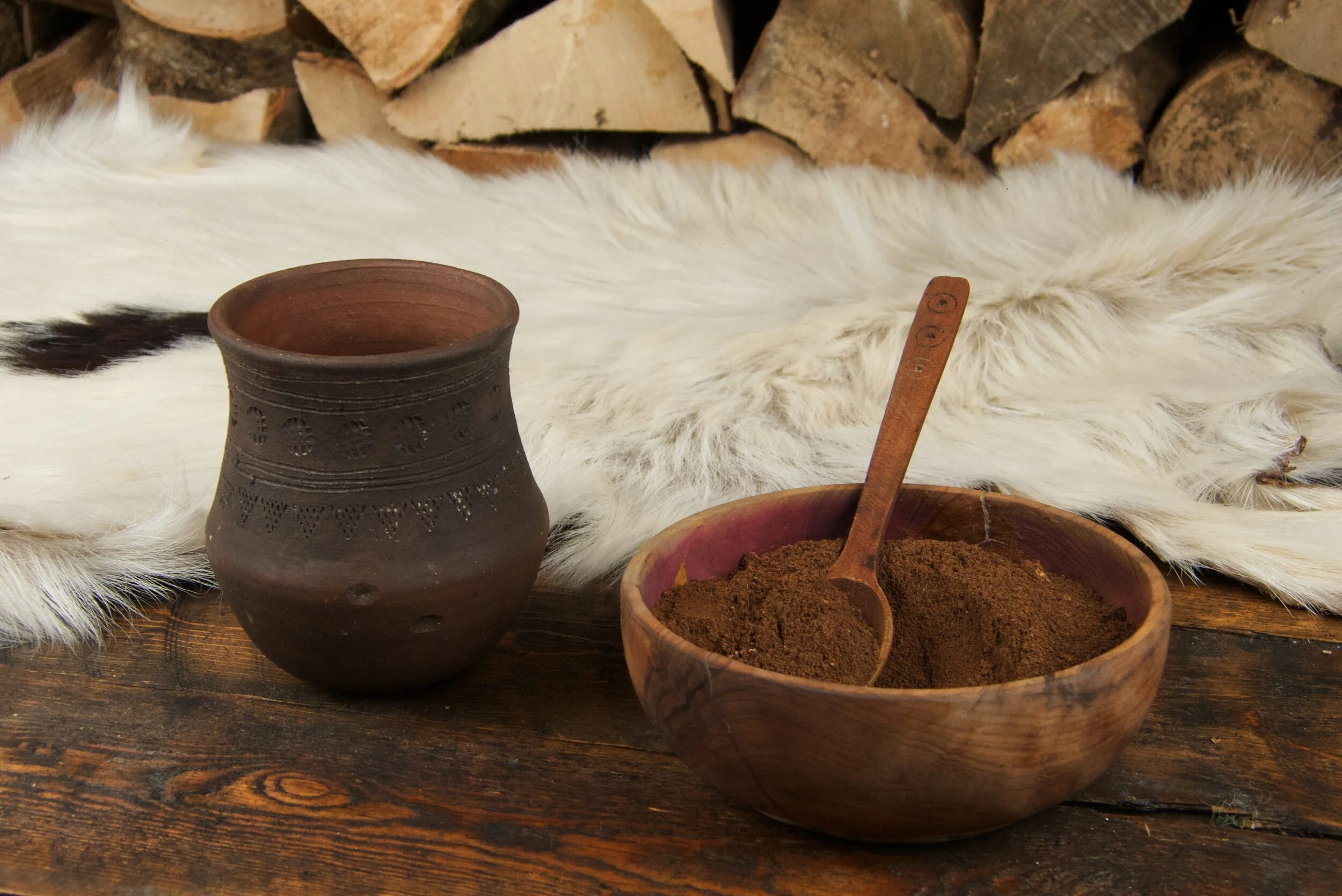Used to light fires with just a spark. It works incredibly well and burns very hot. It’s also easy to make and can be used for authentic fire lighting for reenactment purposes. All you need is some 100% cotton or linen cloth – an old dust sheet works well, though I have heard that denim or old flannels are good, as well as cheesecloth or muslin.
1. Cut the cloth into rough squares, 2″ works well.
2. Put the squares into a tin. Any can work, providing it has a tight seal and doesn’t have any rubber or plastic seals. Try an old sweet or mint tin.
3. Don’t pack the tin too tightly, I learned this my first time, as things don’t burn evenly and I ended up having to start again.
4. Punch a hole in the tin lid using a 6” nail. This allows gasses to escape, without too much oxygen getting in and turning the cloth to ashes.
5. Stick the tin onto a heat source (outdoors due to the smoke produced). I use a small gas camping stove.
6. After a few minutes of heating, smoke will stream from the hole in the lid, which may also ignite at times, but don’t worry, this is normal.
7. Continue to burn until the smoke is no longer coming from the hole – anywhere from 5-15 minutes.
8. Remove from the heat, but do not remove the lid until the contents are completely cool. I learned this the hard way. By removing the lid and allowing oxygen into the tin, the cloth will combust.
9. Once the tin is cool and you have removed the cloth, store in an airtight container and keep dry until needed.
10. To ignite all you need is a spark from a flint and steel and some tinder. Straw, dried nettles or Gorse work well.
Taken from my book ‘Eat like a Viking!’ Available now on Amazon







